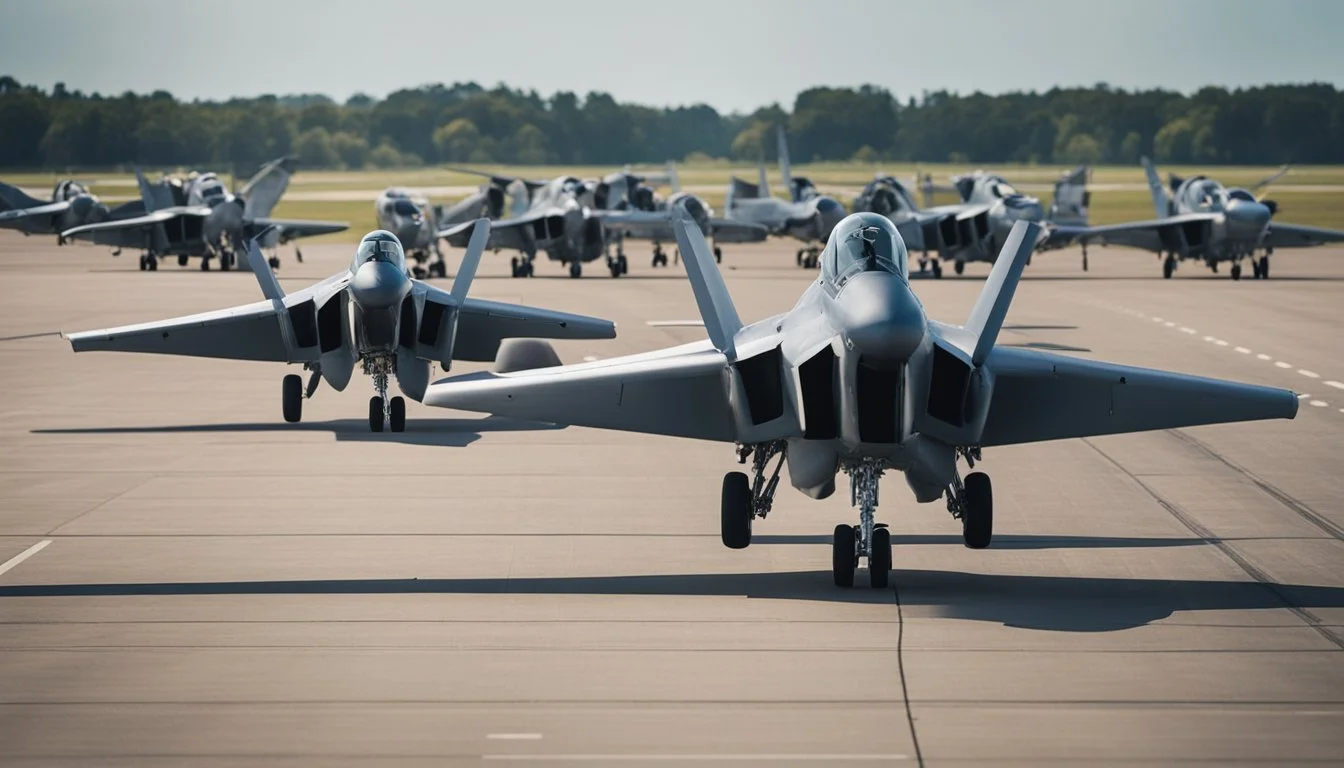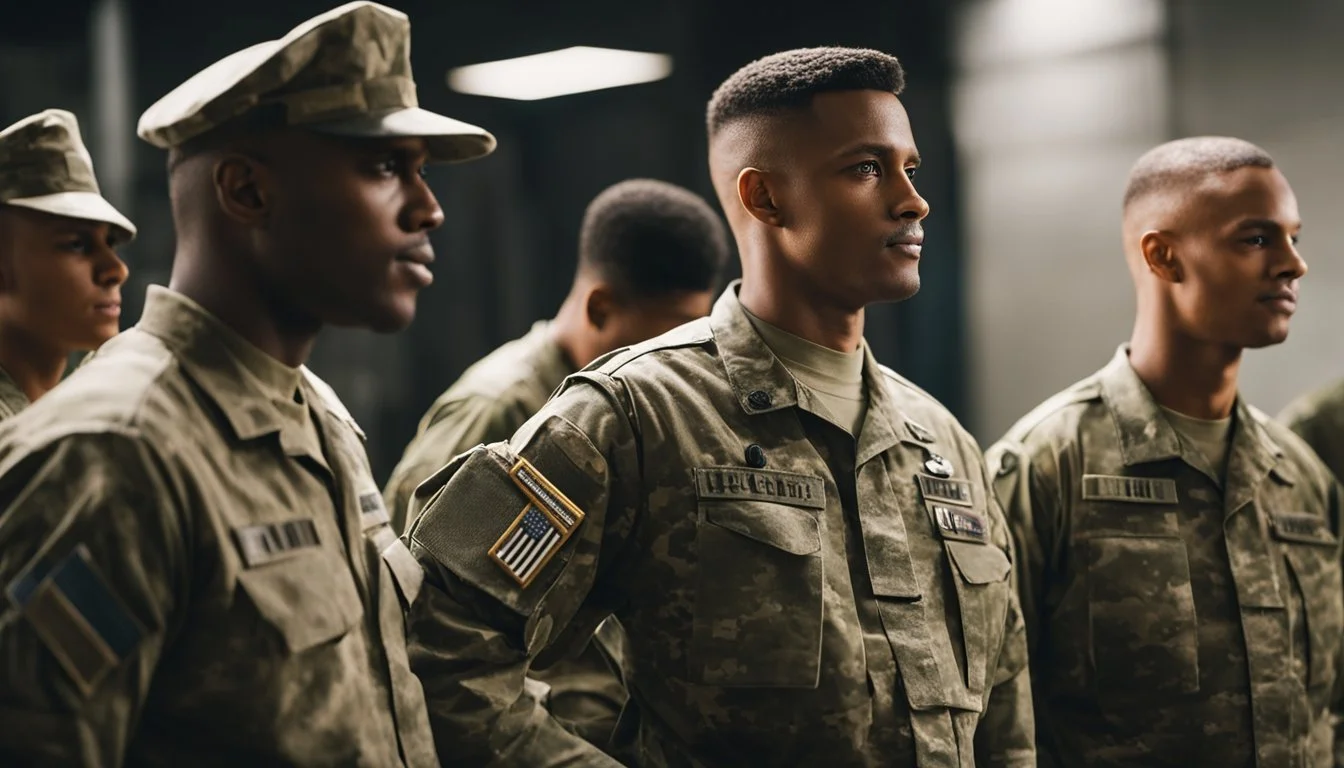Reporting on the Tailhook Scandal Exposes Naval Misconduct and Breaks Military's Code of Silence
The Tailhook scandal of 1991 rocked the U.S. Navy and exposed a deeply entrenched culture of sexual harassment within the military. At the annual Tailhook Association symposium in Las Vegas, over 100 Navy and Marine Corps aviation officers were accused of sexually assaulting 83 women and 7 men.
Investigative reporting played a crucial role in bringing this scandal to light and forcing the military to confront systemic issues of sexual misconduct. Journalists faced significant obstacles in uncovering the truth, as many within the Navy initially closed ranks and attempted to downplay or cover up the incidents.
The fallout from the Tailhook scandal led to major reforms within the U.S. military. It sparked a broader conversation about gender discrimination and sexual harassment in the armed forces. The scandal ultimately resulted in the resignation of the Secretary of the Navy and the early retirement or resignation of several high-ranking officers.
The Tailhook Scandal Explained
The Tailhook scandal rocked the U.S. Navy in 1991, exposing a culture of sexual misconduct and cover-ups within military aviation. It led to widespread reforms and sparked national debates on gender issues in the armed forces.
Origins of the Tailhook Association
The Tailhook Association formed in 1956 as a fraternal organization for Navy and Marine Corps aviators. Its name refers to the hook used to catch arresting wires when landing on aircraft carriers.
The group hosted annual symposiums, combining professional development with social events. These gatherings gained a reputation for wild parties and excessive drinking.
By the late 1980s, Tailhook symposiums had become notorious within naval aviation circles. Some viewed them as harmless traditions, while others saw them as breeding grounds for misconduct.
The 1991 Tailhook Symposium in Las Vegas
From September 5-7, 1991, over 4,000 aviators gathered at the Las Vegas Hilton for the 35th Annual Tailhook Symposium. The event coincided with high spirits following the Gulf War victory.
Daytime activities included lectures and equipment displays. Nighttime saw hospitality suites transform into party venues on the hotel's third floor.
As alcohol flowed, behavior deteriorated. Men formed a gauntlet in the hallway, groping and assaulting women who passed through. Other reported incidents included indecent exposure and public sex acts.
Uncovering the Events
The scandal broke when Lt. Paula Coughlin, a helicopter pilot, reported being assaulted in the gauntlet. Her complaint prompted an initial investigation by the Naval Investigative Service.
This probe proved inadequate, failing to identify suspects or fully document the extent of misconduct. The Pentagon Inspector General then took over, conducting a more thorough investigation.
Investigators ultimately found that up to 83 women and 7 men had been sexually assaulted or harassed during the symposium. The scandal's exposure led to numerous resignations, early retirements, and disciplinary actions within the Navy's leadership.
Key Figures Involved
The Tailhook scandal involved several prominent individuals who played crucial roles in both the events and their aftermath. These key figures shaped the unfolding of the controversy and its impact on military culture.
Lieutenant Paula Coughlin's Testimony
Lieutenant Paula Coughlin, a Navy helicopter pilot, became the face of the Tailhook scandal. She bravely stepped forward to report her assault at the 1991 symposium. Coughlin's public testimony brought national attention to the issue of sexual harassment in the military.
Her actions sparked investigations and led to significant reforms. Despite facing backlash and retaliation, Coughlin's courage inspired other victims to come forward. She ultimately resigned from the Navy in 1994, citing ongoing harassment and a stalled career.
Leadership at the Helm
Several high-ranking officials were implicated in the scandal's mishandling. Navy Secretary H. Lawrence Garrett III resigned in 1992 after questions arose about his presence at the convention. Chief of Naval Operations Admiral Frank Kelso faced accusations of witnessing misconduct but failing to intervene.
Admiral Jack Snyder, commander of Navy air forces in the Pacific, was forced to retire early due to his inadequate response to the incidents. The controversy exposed a culture of cover-ups and reluctance to address sexual misconduct at the highest levels of naval leadership.
The Aftermath of the Scandal
The Tailhook scandal led to extensive investigations, policy changes, and disciplinary actions within the U.S. military. These responses aimed to address the systemic issues of sexual harassment and assault exposed by the incident.
Investigative Responses and Reports
The Naval Investigative Service initially conducted a probe into the Tailhook events. Their findings were deemed inadequate, prompting further action. The Department of Defense Inspector General then launched a more comprehensive investigation.
This thorough inquiry uncovered widespread misconduct and a culture of sexual harassment. The Inspector General's report detailed assaults on 83 women and 7 men during the 1991 Tailhook convention.
The scandal exposed significant flaws in the military's handling of sexual misconduct cases. It revealed a pervasive "boys will be boys" attitude and a reluctance to report or address such incidents.
Implications for Military Policy
The Tailhook scandal catalyzed major policy reforms within the U.S. military. The Navy implemented mandatory sexual harassment training for all personnel. New reporting mechanisms were established to encourage victims to come forward.
The military revised its policies on alcohol consumption at official events. Stricter guidelines were put in place for conduct at conferences and symposiums.
These changes aimed to foster a more respectful and inclusive environment for women in the armed forces. The scandal highlighted the need for cultural transformation within the military ranks.
Disciplinary Measures and Legal Proceedings
Following the investigations, the military took disciplinary action against numerous individuals. Over 300 naval officers faced potential charges or career-ending administrative actions.
However, prosecuting cases proved challenging due to lack of evidence and witness reluctance. Many officers received administrative punishments rather than criminal charges.
Several high-ranking officials, including the Secretary of the Navy, resigned or were forced to step down. The scandal's fallout reached the highest levels of military leadership.
The legal proceedings highlighted the complexities of addressing sexual misconduct in the military justice system. It sparked debates about the effectiveness of existing disciplinary measures.
Cultural and Social Impact
The Tailhook scandal sparked significant changes in military culture and society at large. It brought sexual harassment and assault in the armed forces into the national spotlight, catalyzing shifts in attitudes and policies.
Changing Attitudes in the Armed Forces
The scandal forced the military to confront its longstanding culture of sexism and harassment. Leaders implemented new training programs on proper conduct and respect for all servicemembers. Many units revised their policies on alcohol consumption at official events.
The Navy and other branches increased efforts to recruit and retain women. They also worked to integrate women more fully into previously male-dominated roles and career paths.
These changes met resistance from some who saw them as threats to military tradition and effectiveness. However, most servicemembers eventually accepted the need for a more professional and inclusive culture.
Increased Awareness and Reporting
Tailhook raised public awareness about sexual misconduct in the military. It emboldened more victims to come forward with their experiences. The Department of Defense established new reporting mechanisms and victim support services.
The scandal also highlighted the importance of accountability. The military faced pressure to investigate allegations thoroughly and punish offenders appropriately. This led to more transparent disciplinary processes.
Media coverage of Tailhook inspired similar exposés in other industries. It contributed to growing national conversations about sexual harassment in the workplace.
Impact on Women Servicemembers
For many female service members, Tailhook validated their experiences of discrimination and abuse. It gave them hope that long-ignored issues would finally be addressed.
The scandal's aftermath created both opportunities and challenges for military women. Some faced retaliation or stigma for speaking out. Others found new paths for advancement as the armed forces sought to improve gender diversity in leadership roles.
The increased focus on combating sexual assault led to expanded support services for victims. It also spurred efforts to change attitudes and behaviors that put women at risk.
Media Coverage and Public Perception
The Tailhook scandal garnered significant media attention, shaping public understanding of sexual harassment in the military. News outlets conducted in-depth investigations, while the public reacted with shock and outrage to the revelations.
News Outlets and Journalistic Investigation
Major newspapers and television networks extensively covered the Tailhook scandal. The Washington Post and The New York Times published detailed reports on the incidents. Investigative journalists delved into the allegations, interviewing victims and military personnel.
Paula Coughlin's appearance on ABC's "60 Minutes" brought national attention to the issue. Her courage in coming forward inspired other victims to speak out.
Time and Newsweek magazines featured cover stories on the scandal, highlighting its broader implications for military culture. These articles examined the pervasive nature of sexual harassment within the armed forces.
Public Reaction and Opinion
The American public expressed shock and dismay at the revelations. Many were appalled by the behavior of naval officers and the initial attempts to downplay the incidents.
Protests and demonstrations took place outside military installations. Advocacy groups demanded accountability and systemic changes in military culture.
Public opinion polls showed a sharp decline in trust towards military leadership. The scandal sparked debates about gender equality and professional conduct in the armed forces.
Victims who spoke out received widespread support from civilians. Their stories resonated with many who had experienced workplace harassment. The public outcry put pressure on political leaders to address the issue.
Reflecting on the Legacy of Tailhook
The Tailhook scandal profoundly impacted military culture and policies. It sparked crucial conversations about gender equality and accountability in the armed forces.
Lessons Learned and Future Steps
The Tailhook incident exposed deep-rooted issues of sexual harassment and assault within military ranks. It prompted the Navy to implement mandatory sexual harassment training and establish clearer reporting procedures.
The scandal led to increased recruitment and promotion of women in the military. Leadership roles previously closed to women opened up, fostering a more inclusive environment.
Improved oversight mechanisms were put in place to prevent future incidents. The military strengthened its investigative processes and punitive measures for misconduct.
Despite progress, challenges remain. Ongoing efforts focus on creating a culture of respect and zero tolerance for sexual misconduct.
Tailhook's Place in Military History
The Tailhook scandal marked a turning point in military culture. It forced a reckoning with long-standing issues of gender discrimination and abuse of power.
The incident highlighted the importance of accountability at all levels of military leadership. It led to significant changes in how the Navy and other branches handle sexual misconduct cases.
Tailhook became a case study in military ethics training. It serves as a cautionary tale about the consequences of unchecked behavior and the importance of fostering a respectful environment.
The scandal's impact extended beyond the military, influencing broader societal discussions about workplace harassment and gender equality.


